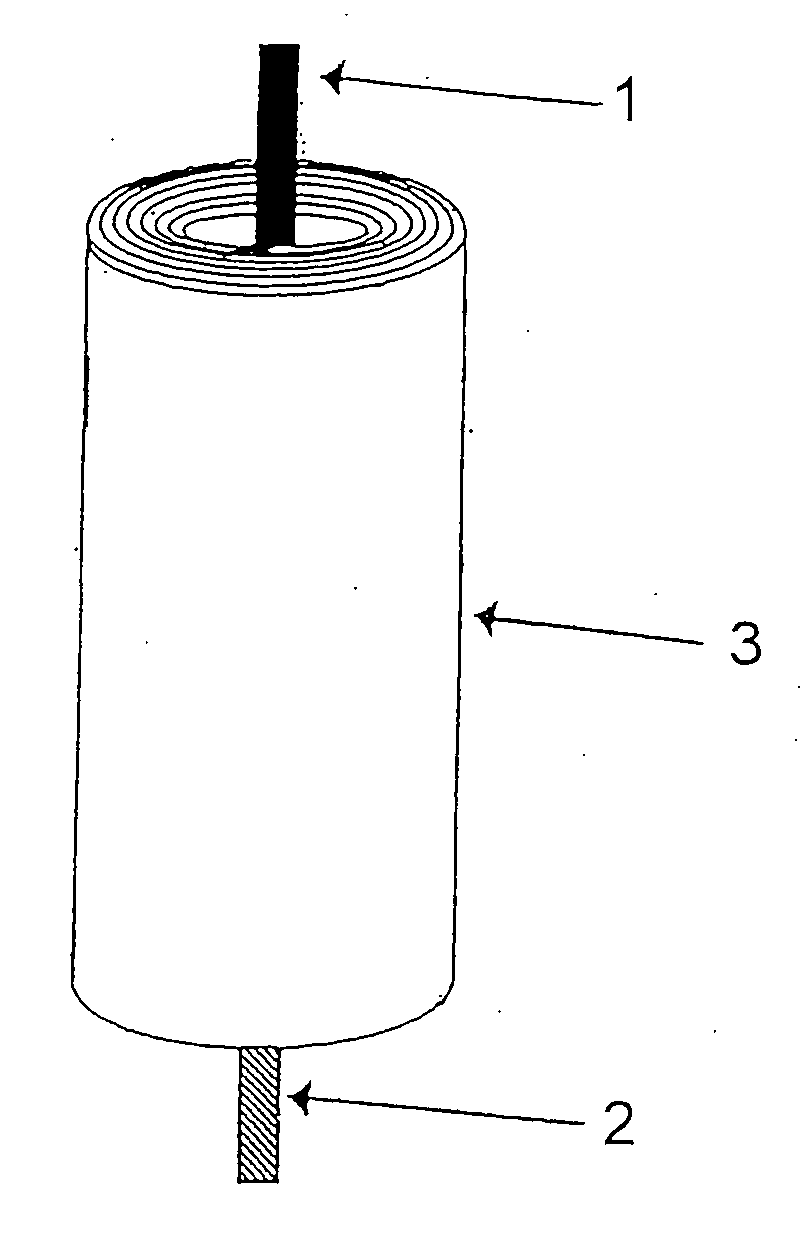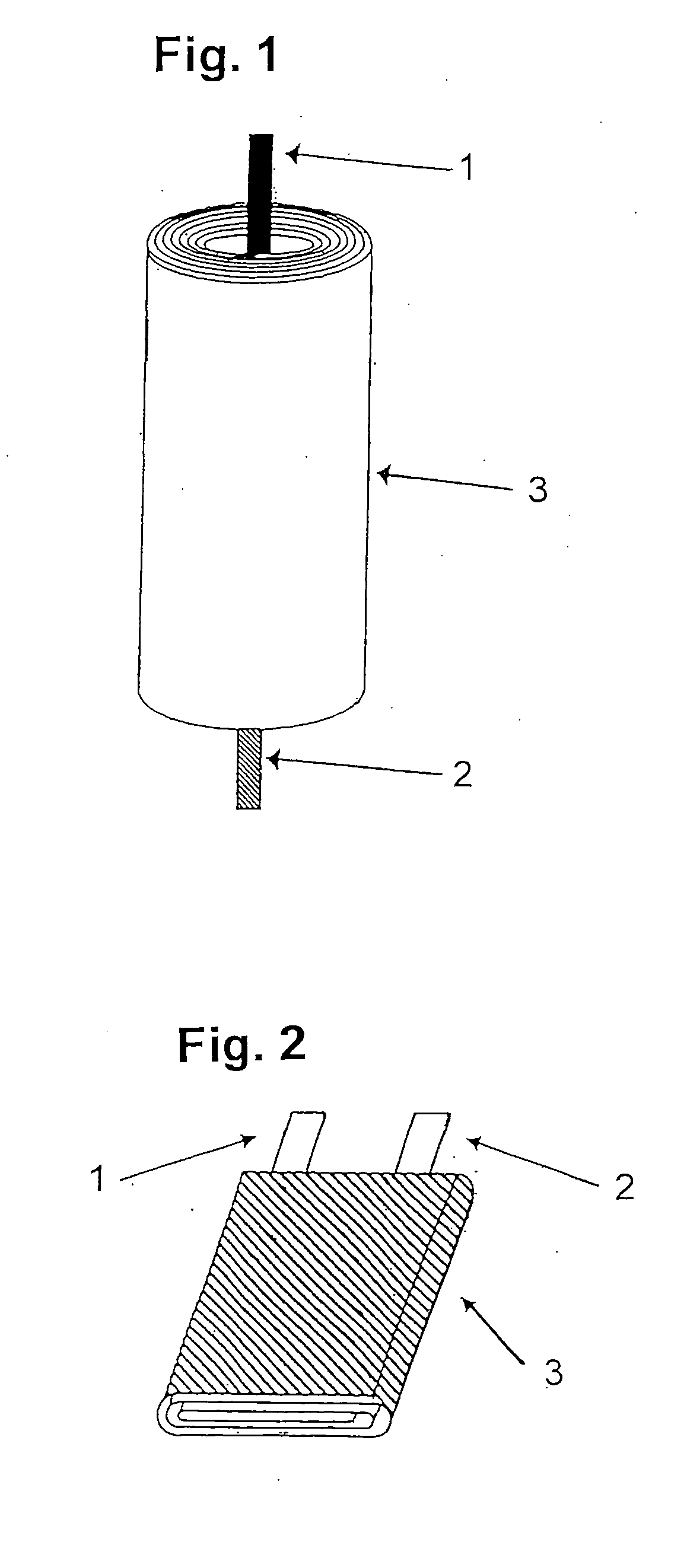Nonaqueous electrolyte secondary battery
a secondary battery and electrolyte technology, applied in the direction of non-aqueous electrolyte cells, cell components, sustainable manufacturing/processing, etc., can solve the problem of increasing the occurrence of electrolyte depletion in the electrode assembly, and achieve superior cycle characteristics and high energy density.
- Summary
- Abstract
- Description
- Claims
- Application Information
AI Technical Summary
Benefits of technology
Problems solved by technology
Method used
Image
Examples
Embodiment Construction
[0042]The present invention is below described in more detail by way of Examples. It will be recognized that the following examples merely illustrate the present invention and are not intended to be limiting thereof. Suitable changes can be effected without departing from the scope of the present invention.
(Construction of Cylindrical Batteries: Example 1 and Comparative Examples 1-4)
[0043](Fabrication of Positive Electrode)
[0044]A lithium cobalt complex oxide (mean particle diameter of 13 μm, BET specific surface area of 0.35 m2 / g), represented by LiCoO2 and incorporating zirconium in the form of particles adhering to its surface, was used as a positive active material. This positive active material was obtained by mixing Li2CO3, CO3O4 and ZrO2 in an Ishikawa automated mortar, heating the mixture in the ambient atmosphere at 850° C. for 24 hours and then pulverizing the mixture.
[0045]The above-prepared particles of positive active material, a carbon material powder as a positive el...
PUM
| Property | Measurement | Unit |
|---|---|---|
| packing density | aaaaa | aaaaa |
| surface roughness | aaaaa | aaaaa |
| surface roughness | aaaaa | aaaaa |
Abstract
Description
Claims
Application Information
 Login to View More
Login to View More - R&D
- Intellectual Property
- Life Sciences
- Materials
- Tech Scout
- Unparalleled Data Quality
- Higher Quality Content
- 60% Fewer Hallucinations
Browse by: Latest US Patents, China's latest patents, Technical Efficacy Thesaurus, Application Domain, Technology Topic, Popular Technical Reports.
© 2025 PatSnap. All rights reserved.Legal|Privacy policy|Modern Slavery Act Transparency Statement|Sitemap|About US| Contact US: help@patsnap.com


